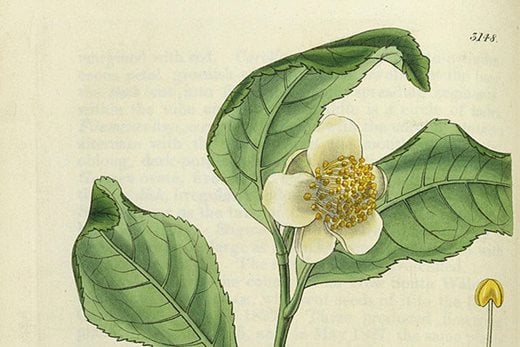Tea is the nation's brew of choice and an incredible 165 million cups of tea are drunk every day in the UK. And amazingly, the tea plant is easy to grow at home

According to the Tea Advisory Panel, an astonishing 40% of the fluid drunk in the UK every day is tea. It’s our nation’s brew of choice, and has been for several hundred years.
Tea was so important to the national psyche that Winston Churchill formulated plans to start growing it in the UK when wartime supplies came under threat from enemy U-boats. Luckily, these plans never needed to be implemented; however, they raised an interesting question:
Can you grow tea in the UK?
A quick look at the Latin name for the tea plant tells you two of the most fundamental facts about it. Camellia sinensis - the Chinese camellia – simple really. In common with most other camellias it’s easily grown in a pot and prefers an acid soil (if not actually acid, at least lime-free). It’s currently grown commercially in several sites in the UK – including Tregothnan in Cornwall. Emily Rae from the company ‘Plants4Presents’ (regulars at the RHS Shows) says that Camellia sinensis is well suited to life in the UK, as it grows above the cloud line in the Himalayas, and can tolerate temperatures down to -10C (14F).
The Scottish crop is protected with polythene sheeting when snow is forecast – otherwise the plants are grown unprotected outdoors all year round. If you live in a cold area it is worth growing tea plants in a cold greenhouse or against a south west facing wall. It’s important to remember to never let the plants dry out, and to feed them after their first flush of growth – use an ericaceous or citrus feed. In common with other camellias, early morning sun can cause scorching if it hits frosted growth, so a west/southwest facing spot is ideal.
How to make your own green tea
- Pluck two leaves and a bud from fresh growth (referred to as a ‘flush’). Don’t harvest more than once in the first year of growth
- Steam the harvested leaves for 1-2 minutes. They should become soft and supple, and change colour to olive green
- Rinse the leaves under cold water to halt oxidation
- Roll the leaves up, and dry them in the oven at 110C (a little under gas mark 1) for 10-12 minutes. They should become dark green and feel crispy
- Use 5-6 leaves per pot, and cover them in boiled (not boiling) water and leave to steep until it reaches the desired strength
Useful links

